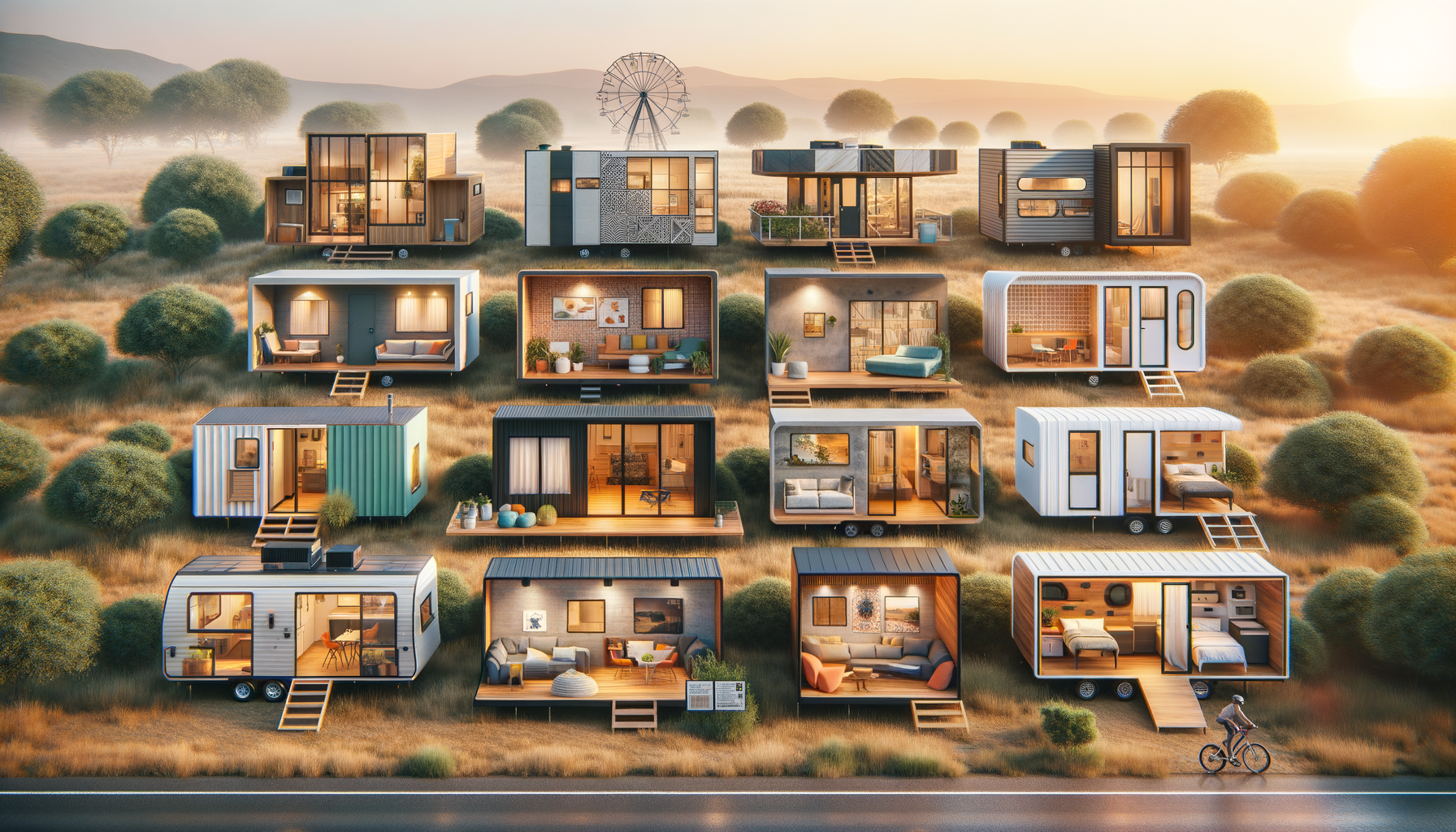The Rise of Tiny Mobile Homes
In recent years, tiny mobile homes have captured the imagination of those seeking a simpler, more sustainable lifestyle. These compact dwellings offer an intriguing alternative to traditional housing, combining mobility with minimalism. The movement began as a response to the growing desire for more affordable housing solutions and the need to reduce one’s environmental footprint. As urban areas become increasingly crowded and expensive, tiny mobile homes provide a way to escape the conventional housing market while maintaining a sense of freedom and adventure.
One of the key drivers behind the popularity of tiny mobile homes is the rising cost of living. Many individuals are drawn to the idea of reducing their expenses by downsizing their living space. Tiny homes, often built on trailers, offer the flexibility to relocate without the hefty costs associated with moving a traditional house. This mobility allows owners to explore new places, live closer to nature, or simply enjoy the freedom of not being tied down to a single location.
Moreover, the environmental benefits of tiny homes cannot be overstated. With a smaller footprint and reduced energy consumption, these homes align with the values of eco-conscious individuals. Many tiny homes are designed with sustainability in mind, incorporating features like solar panels, rainwater collection systems, and energy-efficient appliances. By embracing the tiny home lifestyle, individuals can significantly reduce their carbon footprint while enjoying a simpler, clutter-free existence.
Design and Functionality
Designing a tiny mobile home requires careful consideration of space and functionality. Despite their small size, these homes are ingeniously crafted to maximize every square inch. The challenge lies in creating a living space that is both comfortable and efficient, without sacrificing style. Many tiny homes feature multi-purpose furniture, such as foldable tables and convertible beds, to optimize space utilization.
Interior design plays a crucial role in making a tiny home feel spacious and inviting. Light colors, strategic lighting, and clever storage solutions are often employed to create an airy and open atmosphere. Large windows not only provide natural light but also connect the interior with the surrounding environment, enhancing the overall sense of space.
Functionality is equally important in tiny home design. Kitchens are equipped with compact appliances, and bathrooms often feature space-saving fixtures. Despite their size, these homes can be surprisingly luxurious, with amenities like heated floors, built-in entertainment systems, and high-quality finishes. The key is to prioritize needs over wants and to embrace a minimalist mindset.
Cost Considerations
One of the most appealing aspects of tiny mobile homes is their affordability. While the cost of a tiny home can vary widely depending on size, materials, and amenities, they generally represent a more budget-friendly option compared to traditional housing. This affordability makes them accessible to a broader range of people, including young professionals, retirees, and those looking to downsize.
Building a tiny home can be significantly cheaper than purchasing a conventional house. Many tiny home enthusiasts choose to build their own, which allows for greater customization and cost control. DIY builders can save money by sourcing materials locally and repurposing items found at salvage yards or thrift stores. For those less inclined to take on a construction project, pre-built models are available at various price points, offering turnkey solutions for eager homeowners.
It’s important to consider additional costs associated with tiny home living, such as land rental or purchase, utility hookups, and insurance. However, even with these expenses, the overall cost of living in a tiny home is often lower than maintaining a larger property. This financial freedom enables individuals to allocate resources towards experiences, travel, or savings, enhancing their quality of life.
Community and Lifestyle
Living in a tiny mobile home often means becoming part of a unique and supportive community. Many tiny home enthusiasts are drawn to the lifestyle for its emphasis on simplicity, sustainability, and freedom. As a result, tiny home communities have sprung up across the country, offering residents a sense of belonging and camaraderie.
These communities often share resources, such as communal gardens, workshops, and social spaces. They foster a spirit of cooperation and mutual support, where residents can exchange skills, ideas, and experiences. This sense of community is particularly appealing to those seeking a more connected and intentional way of living.
The lifestyle associated with tiny mobile homes encourages mindfulness and intentionality. With limited space, residents are prompted to prioritize their possessions and focus on what truly matters. This shift towards minimalism can lead to a more fulfilling and less cluttered life, where experiences and relationships take precedence over material accumulation.
Challenges and Considerations
While tiny mobile homes offer numerous benefits, they also come with their own set of challenges. One of the primary considerations is zoning and legal regulations. Many areas have restrictions on the placement and size of tiny homes, which can limit where they can be parked or built. Prospective tiny home owners must research local laws and regulations to ensure compliance and avoid potential legal issues.
Another challenge is the limited space, which requires careful planning and organization. Living in a tiny home necessitates a shift in mindset, where residents must be willing to let go of unnecessary possessions and embrace a minimalist lifestyle. This transition can be difficult for some, particularly those accustomed to larger living spaces.
Additionally, while the mobility of tiny homes is a significant advantage, it also presents logistical challenges. Moving a tiny home requires careful planning and often involves additional costs, such as hiring a professional mover or securing the appropriate permits. However, for those who value flexibility and adventure, these challenges are often outweighed by the benefits of tiny home living.




Leave a Reply